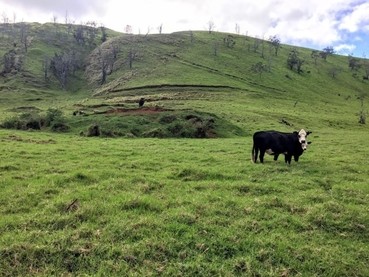This November, the Montana Stockgrowers Association struck a $300 million beef cattle deal between Montana cattle producers and the Chinese e-retailer JD.com. The retailer will buy $200 million of cattle and invest an additional $100 million in a new feedlot and packing plant in Montana. This marks the first US beef trade with China since 2003. JD.com is the first, but likely won’t be the last Chinese retailer interested in quality beef with a place-based story.
What intrigues us at PastureMap is that the brand proposition of Montana’s landscape, water, and clean air carries significant marketing value for an e-commerce retail giant, selling beef to Chinese consumers half a world away. Before starting PastureMap, Christine Su, our CEO, worked for several years in China, where she worked on supply chain operations at various consumer goods companies. She’s seen the massive demand from Chinese consumers for food that is responsibly raised, environmentally friendly and comes with authentic stories. From Shanghai to DC., Seoul to Nairobi, the global trend of increasing urbanization is creating “megacities” of urban consumers who are less connected to rural and agricultural production, but are looking for that story.
The PastureMap community is 8000 independent producers strong, and already includes many ranching businesses that connect deeply with consumers in their region. Telling an authentic, transparent story about how you steward clean air, watersheds, and landscapes can build your brand value not only locally, but globally. We want your story to have a level playing field in the global market, which is why we’re starting this conversation.
For those looking to export beef to China, the following traceability requirements must be met:
-
Beef must be derived from a) cattle that were born, raised, and slaughtered in the U.S., b) cattle that were imported from Canada or Mexico and subsequently raised and slaughtered in the U.S., or c) cattle that were imported from Canada or Mexico for direct slaughter.
-
Cattle must be traceable to the U.S. birth farm using a unique identifier, or if imported, to the first place of residence or port of entry.
-
Beef must be derived from cattle less than 30 months of age
-
Chilled or frozen bone-in and deboned beef products are eligible for shipment.
-
Carcasses, beef, and beef products must be uniquely identified and controlled up until the time of shipment.
In 2018, we’re working on several pilots with independent slaughterhouses to share carcass weight and yield data with their producers. This will help the producer community use data to make decisions, selecting the right animals for improved quality and consistency. We are also enabling traceable lifetime animal records and soil health records, from pasture to plate. We intend to help ranchers and beef brands tell the storyof what you’re already raising – landscape and watershed regenerating, carbon-friendly beef with a compelling story of origin – and make it a verifiable reality.
Stay tuned and get in touch if you or your processor would like to participate in a 2018 pilot.
-The PastureMap Team
Read more here:
USDA’s information on beef exports to China
Chinese eCommerce giant strikes $300 million Montana beef deal
